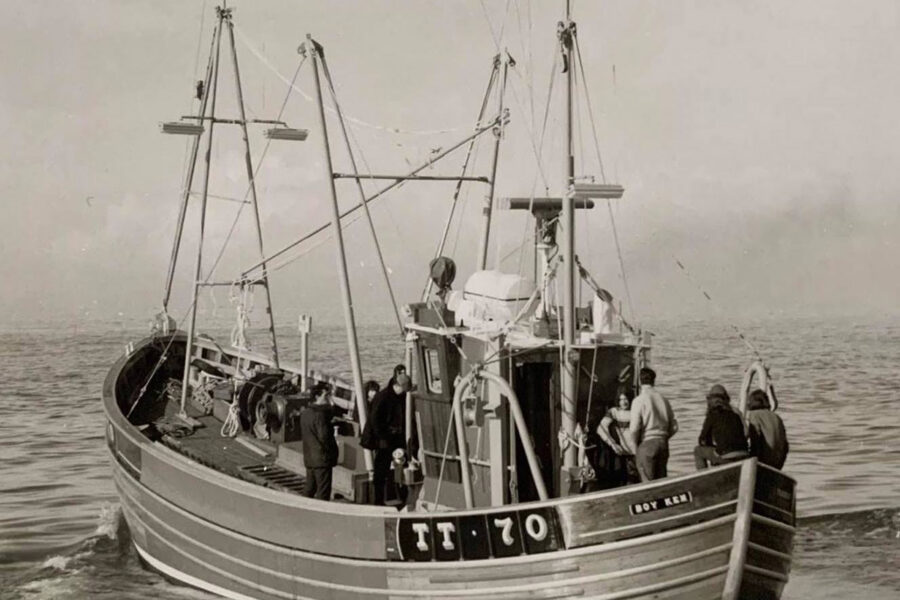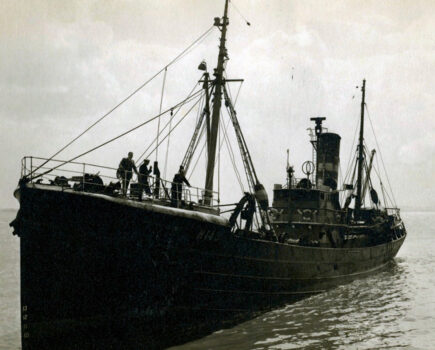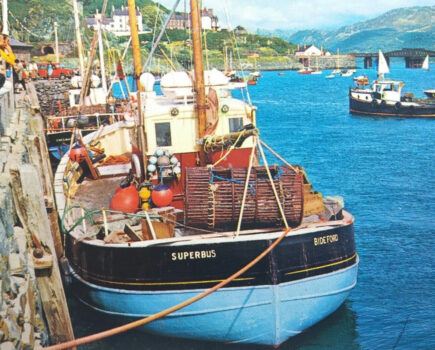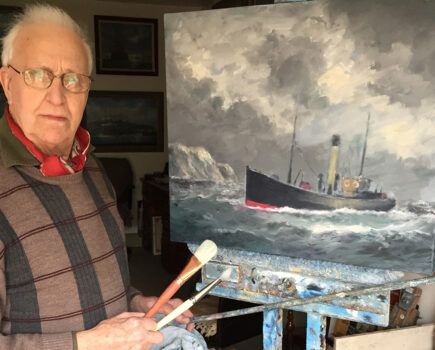Launched as Boy Ken TT 70, this Noble’s stalwart was built for scalloping – as well as prawn trawling and herring and sprat pair-trawling – and 52 years later, she’s a fixture of the Manx scallop fleet
By Mike Smylie
Being a west coast sort of person, there is always a sense of allegiance in writing about those very few boatbuilding yards on the west coast. In the postwar era of fishing vessels, you can almost count the west coast yards building in wood on one hand. And always it is the Girvan yard of Alexander Noble that stands out as the leader of the field.
Back in 1919, a young Alexander Noble, aged 14, was taken to the yard of Wilson ‘Cocky’ Noble in Fraserburgh at six o’clock one morning by his father Peter – the story was relayed to me by Alexander’s son, also Peter – to begin his apprenticeship. By 1933, Alexander had moved to the west coast of Ireland to take up a position as foreman in the St Columba Industrial School in Killybegs. He returned to Scotland two years before the outbreak of the Second World War to work with James A Silver, yacht builder at Rosneath.
Part of his work there was the repair and maintenance of the Clyde-based ring-net fleet. It wasn’t too much of a surprise, then, that in the aftermath of war, sensing the expansion of the fishing fleet around the Clyde, where the ring-net was still widely used, he opened a new yard in Girvan in 1946, with his eldest son James alongside him.
Yet ironically it wasn’t the ring-net that his first build, the Margaret Stephen BA 251, was for. Launched the following year at just under the 40ft mark, she was designed for the seine net and scallop fishing. This was a time when many other fishermen were turning away from the herring towards the prawn trawl. Despite this, others thrived at it, and Noble’s yard produced some of the finest ringers ever seen.
From Alexander Noble’s early days to the start of the 1970s, the yard produced a variety of fishing vessels, along with the odd commercial vessel, a yacht and a pilot boat. Build number 70 was the 52ft Frey, which started life as Boy Ken TT 70 when she was launched from the yard in March 1972.
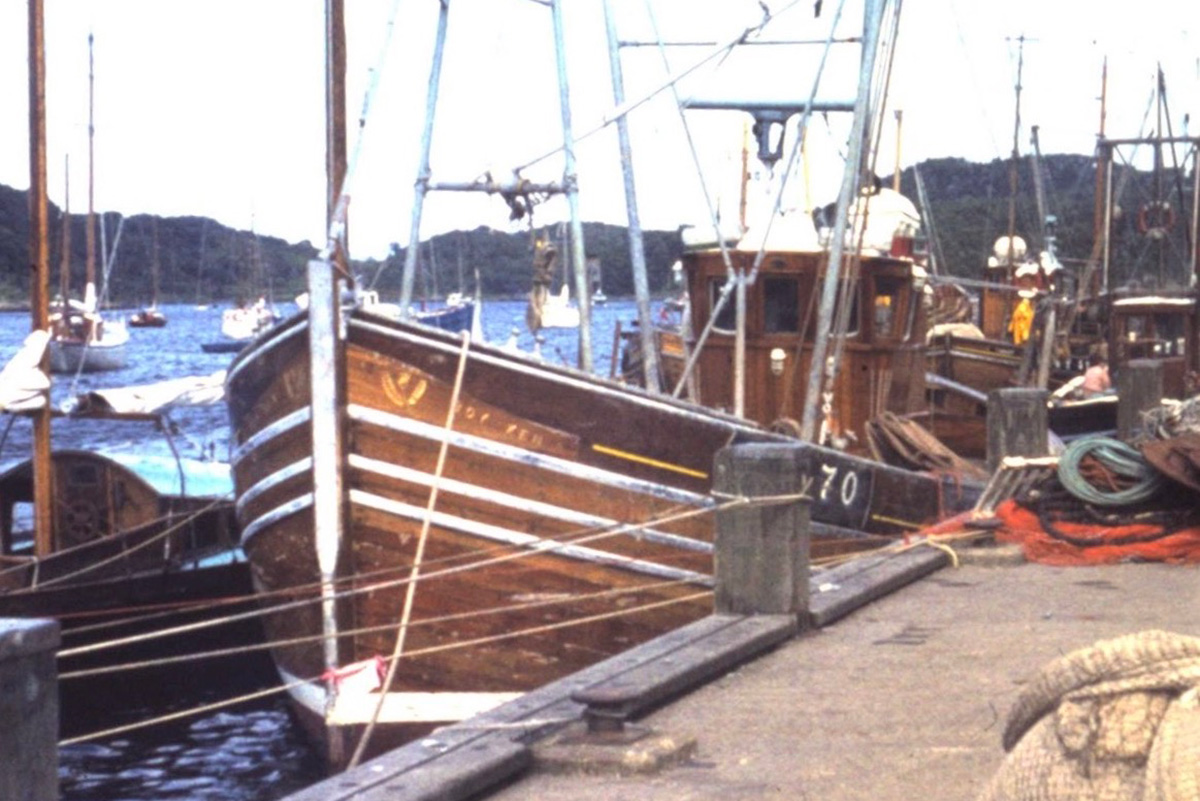
Boy Ken alongside in Tarbert. (Photo: Mike Craine)
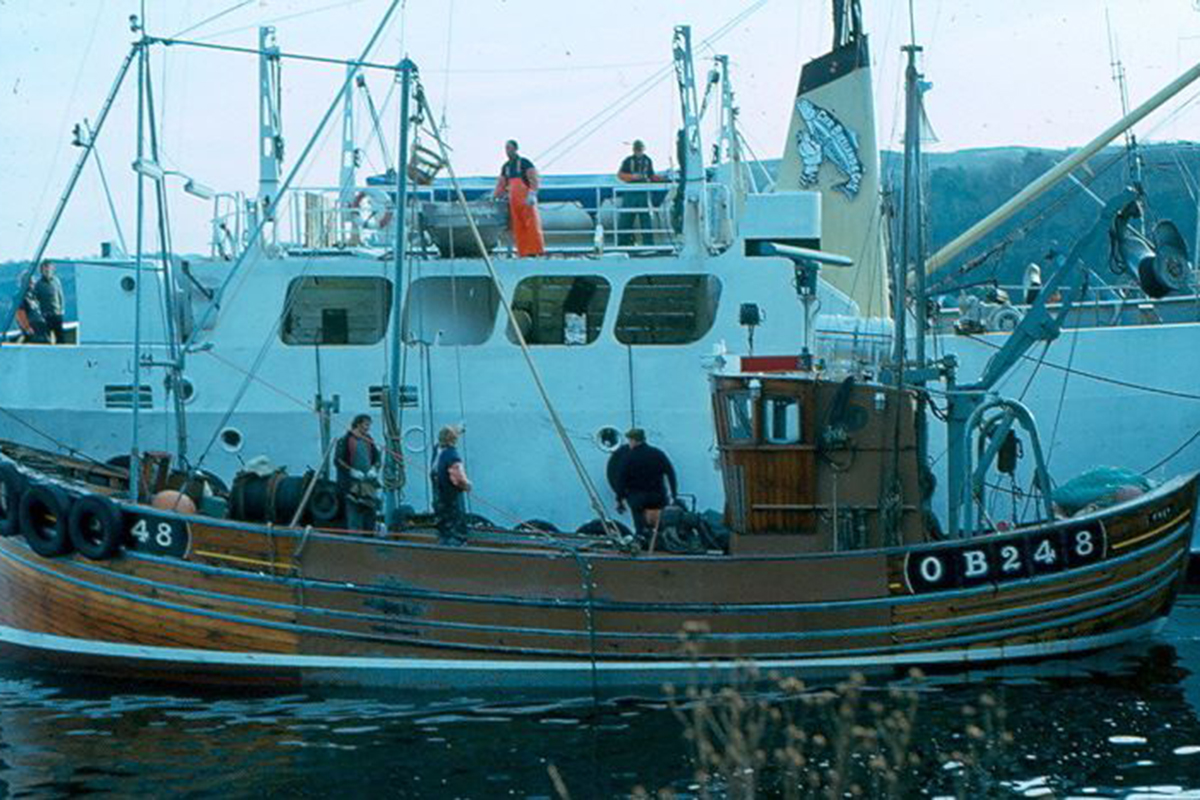
In Tobermory, after the name change to Frey in the mid-1970s.
She had been built for James Prentice of Tarbert and the Associated Fisheries of Granton, and cost £48,000 including the 250hp Caterpillar engine. She was designed to trawl for prawns, and pair for herring and sprats, as well as dredge for scallops, and seemingly was working scallops with four dredges a side as far south as Cardigan Bay in her first year.
Within a few years, by 1975, she had been sold to Iain ‘Johndon’ MacDonald of Tobermory and re-registered as OB 248. She was renamed Frey soon after, and pair-trawled with the Aquila OB 99. This vessel was also built by Alexander Noble in 1972, the next launch after Boy Ken, and was owned by Alexander (Alasdair) MacLean of Dervaig.

The vessel’s new name board. (Photo: Darren Purves)
Alasdair had previously owned the renowned Manx Beauty CN 233, which is now owned by the Manx Beauty Project of the Cellardyke Trust and awaits restoration.
When the herring fishery collapsed and the ban came in, Iain sold Frey on. She was replaced with a Cygnus 37, also called Frey, and Iain’s son Colin fished locally for prawns, before he emigrated to Australia in the 1990s.
In July 1979, Frey was bought by George Summers of Port Erin, Isle of Man, and re-registered as CT 137. She fished from Port St Mary for scallops and queenies. George fished her until retiring in 1992, at which time she was bought by Billy Caley of Peel, one of the first vessels added to what today is his fleet of vessels.
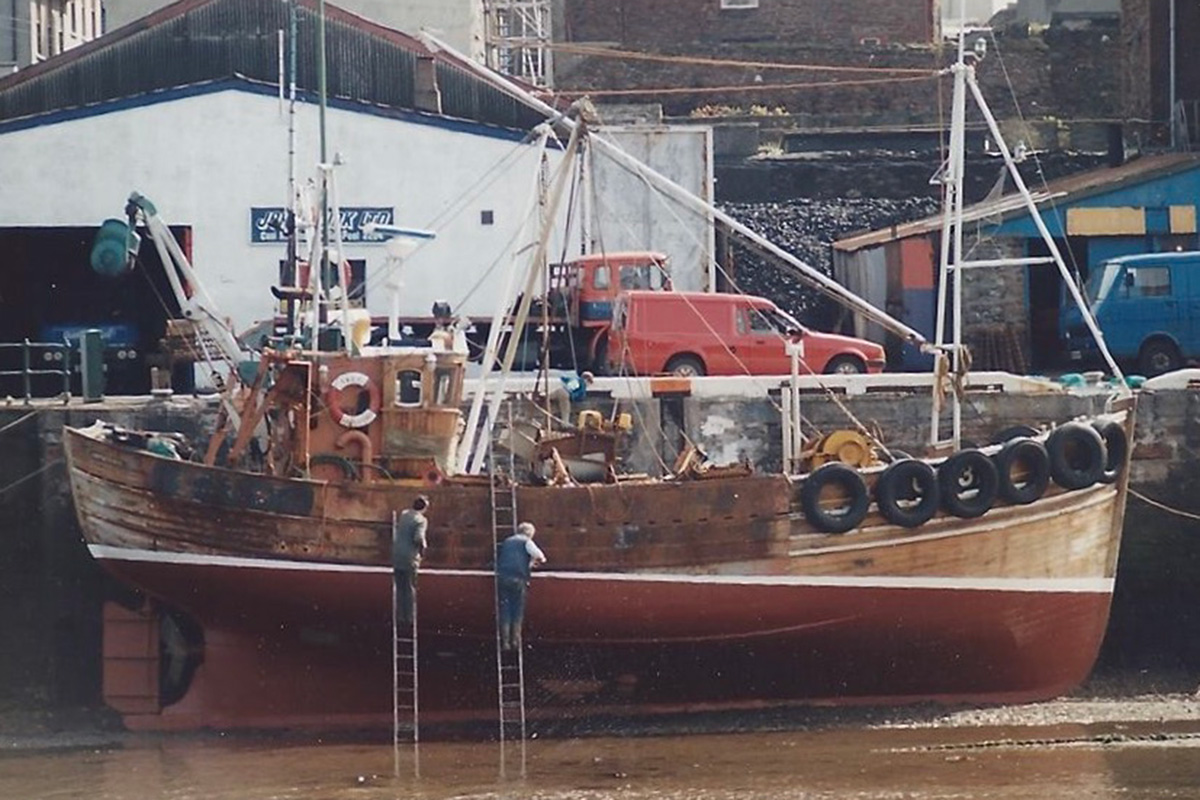
Out of the water in Peel for maintenance. (Photo: Mike Craine)
Billy skippered her to start with, and I’m told she was handed over to skipper Alan Woodbridge when Billy started developing his onshore seafood business. A succession of skippers followed Alan, including Charlie Boyce, Shaun Norman and Stephen Griffin, and then more recently Simon Morley.
I spoke to Stephen Griffin, who skippered her for four years. “I took her over in November 2017, just in time for the start of the season. We were scalloping and queenieing, mostly around the Isle of Man. She was a solid boat, good in poor weather, but a bit rolly.
“A steady roll, mind you,” he added as an afterthought. “Nothing scary. She was a good carrying vessel, 200 bags and I felt safe in her. A good trawling boat, built for the herring. But a safe, go-anywhere boat. Tight too, and I believe she’s hardly taken a drop of water whilst she’s sitting in Mallaig. I know I’d prefer being on her than any of these modern boats of today!”
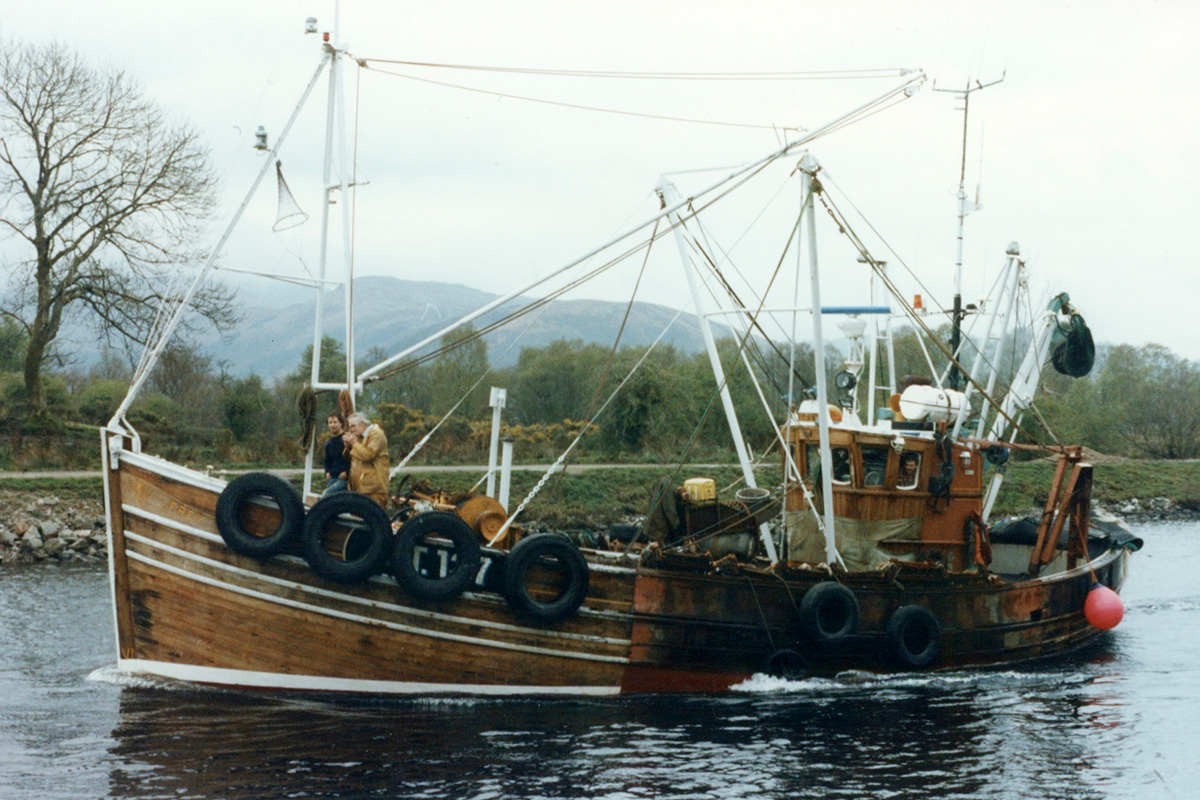
Frey in the Crinan Canal.
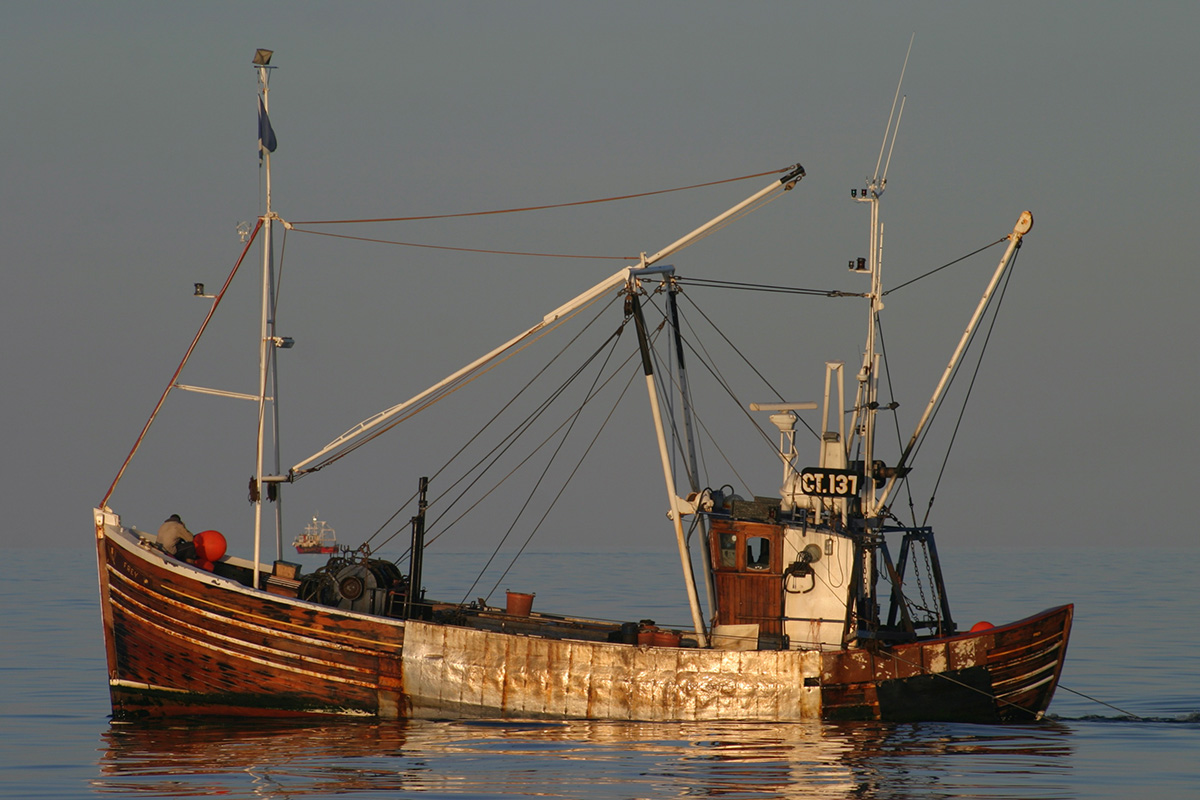
Evening sun off Peel.
In November 2021, Frey had an electrical fire in the engineroom whilst they were fishing off Douglas, but Stephen and his crew got the fire under control straight away. They had to get a tow back into Douglas from the lifeboat once the fire was totally out. This was featured on the BBC Saving Lives at Sea programme which, some say, exaggerated the event.
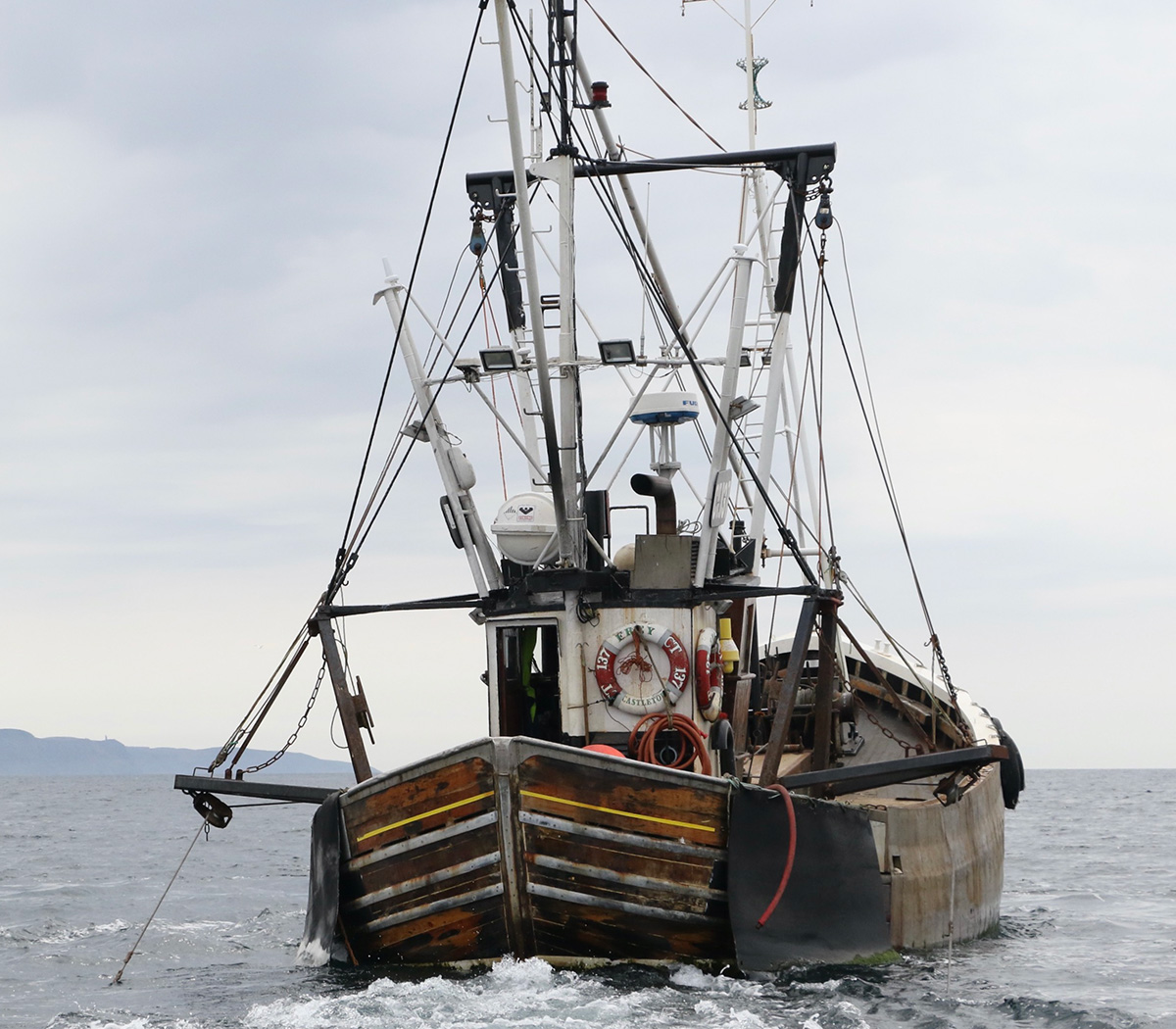
A stern view of Frey towing. (Photo: Darren Purves)
Another skipper of Frey was caught illegally fishing for scallops in Douglas Bay in May 2017, and ended up in front of the magistrates and being fined over £6,000. Needless to say that skipper, nameless here, didn’t stay aboard her for long, as he was barred from holding his ticket for a year.
When I got a chance to speak to Billy, he told me that just the previous day he’d had skipper Simon Morley in the office, who had been telling him about the time he’d been landing into Tarbert, and the attention Frey had drawn from various quarters including, obviously, the fishermen.

The vessel at work off the Isle of Man. (Photo: Darren Purves)
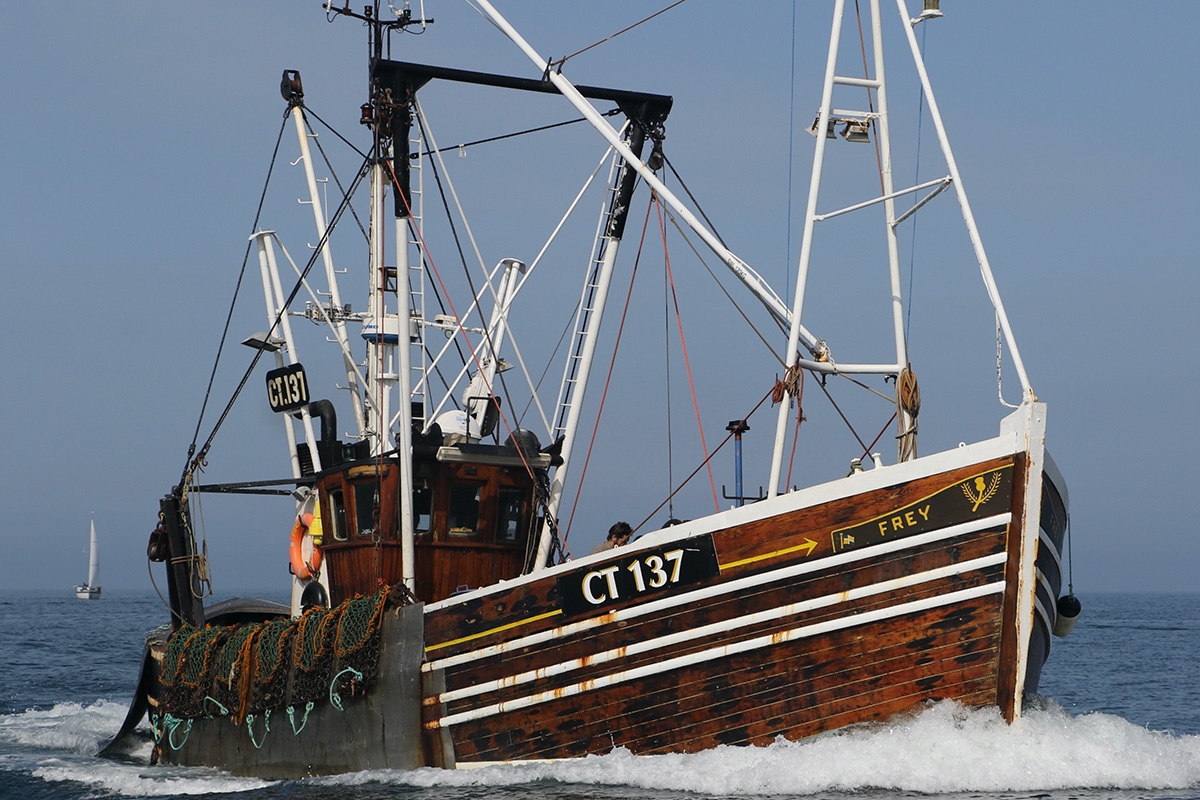
Frey at 50 – and going strong. (Photo: Darren Purves)
Simon told him that she was still famous up there from her Boy Ken days, and that they all mentioned the fact that she’s still varnished. She is, for sure, one of the only remaining varnished boats in the west coast fleet, and looks wonderfully fresh from being slipped at the Ramsey Shipyard in August 2023. I also heard she’s Mrs Caley’s favourite vessel!
Having said that, at the end of 2023 she developed engine problems, and ended up getting towed by the Shannon Kimberley up to Mallaig. She is currently awaiting parts for her Caterpillar engine, and hopefully will be back to sea in time for the end of the scalloping season.
Thanks to Alastair MacLean, Billy Caley and Stephen Griffin.
This story was taken from the latest issue of Fishing News. For more up-to-date and in-depth reports on the UK and Irish commercial fishing sector, subscribe to Fishing News here or buy the latest single issue for just £3.50 here.
Sign up to Fishing News’ FREE e-newsletter here.

